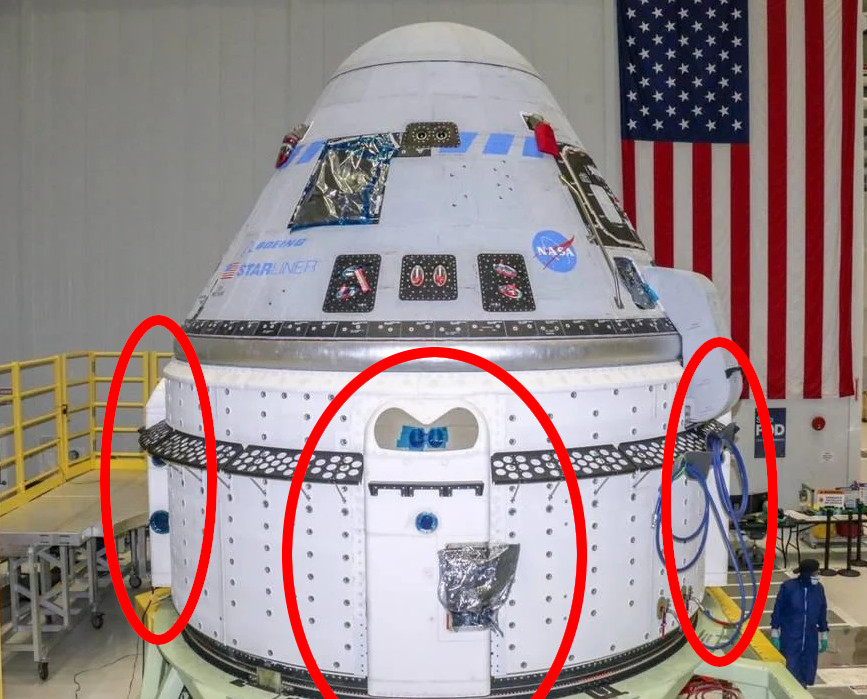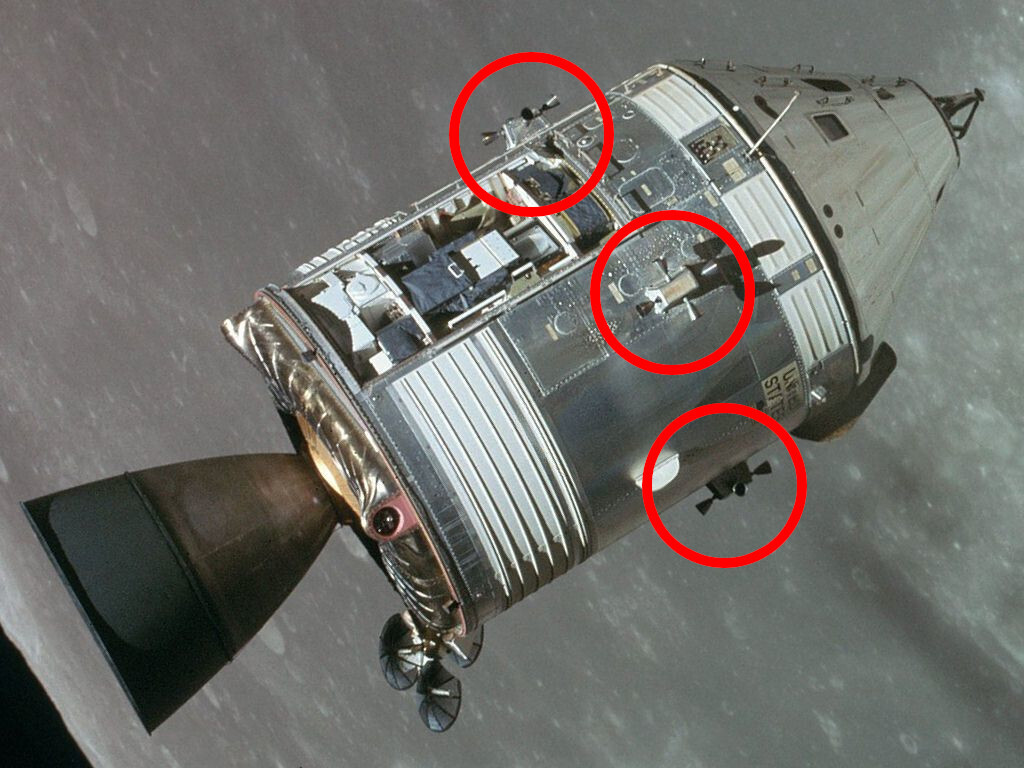A meeting this week of NASA's Commercial Crew Program, which oversees Starliner, ended with some officials disagreeing with a plan to accept Boeing's testing data and use Starliner to bring the astronauts home, officials said during a news conference.
"We didn't poll in a way that led to a conclusion," Commercial Crew Program chief Steve Stich said.
"We heard from a lot of folks that had concerns, and the decision was not clear," Ken Bowersox, NASA's space operations chief, added.
My jaw literally dropped at this. This is NASA-speak for "We want it publicly known that we think the contractor is incompetent, and no-one here is going to stick their neck out for them, and we're not going to name names of our own people for the contractor to retaliate against." I can't remember ever seeing an actively-employed NASA official going on the record and saying this about a big longstanding contractor involved in multiple current projects. This is language normally reserved for little cubesat makers that screw up a contract. This is unheard of for a big one like Boeing.
A Boeing executive was not at the Wednesday press conference.
Yeah, no kidding. No crew return on the same vehicle means no certification for operational flights. No certification means another test flight. And because it's a fixed-price contract a new test flight will be at Boeing's sole expense. It will cost them hundreds of millions of dollars more of Boeing's own cash, maybe closer to half a billion. And all because they wanted to build spacecraft on the cheap mostly using computer simulations, instead of building real hardware to put on real test stands.
You know how sometimes a real shithead gets appointed to a high office, and despite them not having anything to do with causing a particular problem, it's a lot of fun watching them get politically fucked over because a major fuckup occurred when they happen to be occupying that office? Well, current NASA Administrator Bill Nelson is that shithead here. While he was in Congress in 1986, he used his connections to bump a mission specialist from a shuttle mission just for his own ego. NASA's astronaut corp gave him the nickname "Ballast" because he was absolutely useless on the flight. He was dead weight. His appointment as Administrator by Joe Biden in 2021 was highly controversial in the astronaut corp because of that.
You know how sometimes a real shithead gets appointed to a high office, and despite them not having anything to do with causing a particular problem, it's a lot of fun watching them get politically fucked over because a major fuckup occurred when they happen to be occupying that office?

"We didn't poll in a way that led to a conclusion,"
NASA bravely exploring the outer edges of passive voice.
Putting your life in the hands of a private company that is ran by a man who thinks he can win a lawsuit from suing companies for NOT advertising on his platform
Having to get bailed out by Muskman, how embarrassing.
I thought it'd be helpful to explain the Starliner thruster problem here.
So here's the Starliner system. It works like the Apollo spacecraft. There's two parts. The crew module that comes back to Earth, and the disposable service module that is jettisoned before the crew capsule re-enters the atmosphere.
You see those slim white boxes spaced at 90° around the service module? Those are the thruster packs, also known as the "doghouses".
Show
Each one has 11 thrusters. 8 of them are reaction control system thusters, aka RCS. These are the very-low-power thrusters that are used for ultra-high-precision maneuvering, like you need during docking. Each doghouse has 2 pairs (for redundancy) each aimed in four directions - forward, aft, starboard, and port.
If you've ever seen the Apollo spacecraft, they do the same job as those little blocks with the tiny engines sticking out.
Show
The remaining 12 thrusters (3 per doghouse) are more powerful ones called OMAC (Orbital Maneuvering and Control). They're basically the "main engines" of the spacecraft. Here's what a doghouse looks like without the cover.
Show
The blue circles are those OMAC "main engines". The red boxes are the aft-facing RCS thrusters.
The five RCS thrusters that failed were all aft facing. They are the same model of RCS thruster as the forward, starboard, and port thrusters, all of which are working fine.
The speculation is that the aft RCS thrusters are too physically close to the OMAC thrusters, which is causing uncontrollable overheating while the spacecraft isn't docked and the engines are ready. If this is indeed the cause of all the problems, then that means this is not a software or assembly line or QA problem, but a design flaw with Starliner's thruster doghouses. And that could be extremely expensive for Boeing, with significant time delays.
But what about the RCS thrusters on the crew module, you may ask? Well, here's the fun part: it is unclear if they are also packed too close to other systems that may cause overheating issues. Even if the two astronauts are able to fly the spacecraft away from the ISS (which is by no means certain with temperamental service module RCS thrusters), it could mean a loss of control during re-entry. Or in plain english, a dead crew.
Further clarification on overheating in spacecraft. Obviously there's no atmosphere to carry away heat by convection. Spacecraft rely on radiator panels to radiate away heat. For example, the Space Shuttle's radiators were on the interior of the big cargo bay doors. Space Shuttles had to open their cargo doors almost immediately on achieving orbit or they'd risk overheating. If a shuttle couldn't get its doors open, it meant the flight would be aborted and they'd have to return immediately to Earth. In practice that never happened on an actual flight, but it was a standard emergency procedure. The International Space Station's radiator panels are those giant white slightly-corrugated panels that are at 90° to the solar panel arrays. SpaceX's Dragon has its radiators panels covering 180° of it's "trunk", the disposable aft unpressurized-cargo cylinder section, with solar panels covering the other 180° of the cylinder.
Even a small amount of unexpected heat buildup adds up over time, especially in situations involving thrusters. If Boeing's engineers didn't properly account for the heat interaction between the RCS and OMAC thrusters it could easily lead to the overheating issues on this flight. There's no overheating now because all the thrusters are shut down while docked. But the moment they undock, that problem could come back, and it might happen even faster and be more severe if there's permanent heat damage to the thrusters.
The lunar rovers had an amazing heat management system. I love to tell this story, it's one of those classic Apollo so-simple-it's-genius ideas. They couldn't afford the size or weight or battery power for a complex pump system or huge radiator panels, and the electric motors did build up quite a bit of heat. So they just had boxes of paraffin wax acting as heat sinks. When they stopped the rover to do work, they unfolded a few small metal flaps from the top of the paraffin wax box to act as radiator panels. They knew everything was cool (figuratively and literally) when they saw with their own eyes that the wax had solidified. No power needed. Didn't take up much mass or volume. Just boxes of wax and some metal sheets. Those rovers were amazing pieces of engineering.
Did they not do multiple thermal simulations or actual hardware tests on every part of the ship? That's nuts if they didn't, or even if they did but botched the simulation, that's going to be a nightmare to fix.
The Starliner program has been notorious for relying heavily on computer simulations, instead of doing the "hardware-rich" testing that SpaceX is famous for and which was also the norm in the 1960s NASA culture.
Yeah, it was the Saturn V "pogoing" problem. It really is amazing that spaceflight is even possible given the engineering challenges.
How fast would they be home if they contacted china or russia to pick them up?
China's banned from the ISS, by US decree. And I'm sure there's some sanctions against Russia that prevents them, too. I'm sure Elon Musk isn't their first choice of rescue but might be their only.
Hoist by thine own petard.
I'm assuming Bezos doesn't want the bad publicity in case it becomes OceanGate 2: Challenger Columbia Boogaloo
now the latter has occupied one “permanently”,
They should just cut it off with an angle grinder
what if the astronauts rig up the working rcs thrusters to their spacesuits and blast out to the Chinese space station?
I figure it's assumed they make it back in one piece as opposed to particulate spread thinly across the sky but given it's SpaceX I'd like to question why that is assumed
Apparently their products also adhere to this adage.
SpaceX coming to save them? I predict a repeat of the submarine cave pedo guy situation.













